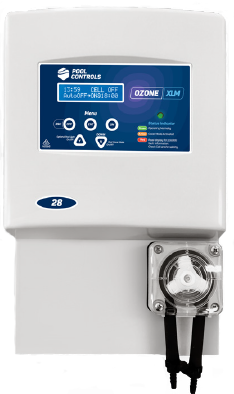Your Pool Anatomy: Understanding the Working Parts of Your Pool
The Filtration System: The Heart of Your Pool

Think of the filtration system as the heart of your pool. It consists of several essential parts, including the pump, filter, chlorinator, and potentially a heater. Together, these components work tirelessly to remove dirt, debris, and other impurities from the water, keeping it clean and sanitary for your enjoyment.

The Pump: The Circulatory System
The pump acts as the circulatory system of your pool, circulating the water through the filtration system. Located on the intake side of the filter, the pump pushes the pool water through various components, such as the filter and heater, before returning it to the pool. There are different types of pumps available, including single speed, two speed, and variable speed pumps. Variable speed pumps are the most energy-efficient option, as they can adjust their speed to operate at lower, more cost-saving levels based on the filtration system’s need.
 The Filter: Trapping Impurities
The Filter: Trapping Impurities
Working in conjunction with the pump, the filter traps impurities, such as dirt, hair, and sand, that are too small to see with the naked eye. There are three types of pool filters commonly used: Diatomaceous Earth (DE), Sand, and Cartridge filters. DE filters provide the highest level of filtration, resulting in crystal-clear water. Sand filters are easy to install and maintain, while cartridge filters are cost-effective and don’t require backwashing.

The Chlorinator: Sanitizing the Water
The chlorinator plays a crucial role in maintaining water quality by adding sanitizing agents to the pool water. There are different types of chlorinators available, including those that require manual replenishment of chlorine tablets or liquid chlorine. Alternatively, there are salt chlorinators that generate chlorine naturally through salt technology.
Shop All Your Chlorinator Needs:

The Heater: Extending The Pool Season
A heater allows you to extend your swimming season by warming the pool water. Gas heaters, electric heat pumps, and solar heaters are commonly used types of pool heaters. The choice depends on your specific needs and preferences.
The Skimmer: Removing Debris Another important component of your pool is the skimmer, which is designed to remove debris from the water. Usually built into the pool, the skimmer has a basket that quickly collects leaves, insects, and other debris. It connects to the pump intake, drawing debris into the filtration system. Skimmers can also be equipped with parts or adapters for automatic or robotic pool cleaners.
Shop All Your Pool Heating Needs:
Maintaining Your Pool Anatomy
To ensure the longevity and proper functioning of your pool, it is important to maintain and treat its components well. Use high-quality, durable, and non-corrosive materials when building or renovating your pool to conserve energy and keep your electricity bills reasonable. Regular maintenance, including cleaning and replacing filters, monitoring chemical levels, and checking equipment, is essential for keeping your pool in optimal condition.
For expert advice and guidance on your pool’s anatomy, we recommend consulting with the Pool Builders Pool Shop. At Pool Builders Pool Shop we have the expertise and knowledge to assist you in properly maintaining and operating your pool. Understanding the ins and outs of your pool’s anatomy will help you enjoy a beautiful and healthy pool for years to come.
Related Articles
Maintaining your pool through the summer storms
Summer in Brisbane, Australia, is known for its glorious sunshine, high temperatures, and outdoor fun by the pool. However, it’s also notorious for sudden summer storms that can wreak havoc on your pool. At Pool Builders Pool Shop, we understand the unique challenges Brisbane pool owners face during the storm season.
Keeping your pool looking and feeling beautiful after the school holidays
The school holidays are a time of joy and fun, with the pool being the centre of many memorable moments. But after holiday BBQs, family events and the neighbourhood kids visiting for all that pool-time fun, your pool might need some extra care to restore its sparkling beauty and ensure it’s ready for more fun times ahead.



